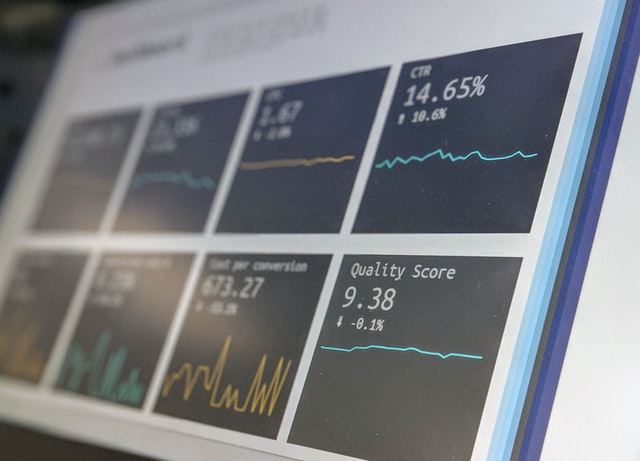
Talent Acquisition channels: What they are and how to use them
What is meant by Talent Acquisition and what are the best channels to set up this very strategic activity? Find out in our article.
Talent Acquisition, for those who deal with Human Resources, is definitely a fundamental aspect of the job. But it is different from recruiting itself.
In the first case, in fact, the approach is undoubtedly more strategic: the goal is to find talent, as the word itself says, and plan all those actions, in the medium and long term, that allow you to find suitable candidates for positions that require very specific skills and considerable experience.
Recruiting, on the other hand, focuses on achieving a short-term goal: to fill a vacancy, i.e. a vacant position, often in the shortest possible time. Talent Acquisition and recruiting share many of the same channels, although in different ways.
Before looking at them, let’s take a moment to look at the characteristics of Talent Acquisition to understand how and when it becomes fundamental.
SUMMARY
What is Talent Acquisition and when is it needed?

Looking for the brightest professionals for your company, regardless of the job openings, undoubtedly requires many skills, including the ability to have a vision, to be able to look far, to listen, to analyze contexts and see what a more superficial eye would not see. Talent Acquisition, therefore, is anything but simple, also because the word “talent” itself is not.
In the words of writer Roberto Gervaso:
“Talent is a spark, genius is a flame” and, still using the metaphor, it is much easier to see a flame burning than to notice a spark that is fleeting, brief, instantaneous.
This is why attracting talent is anything but a simple task, and it becomes useful, if not indispensable, in these contexts:
- For companies that are newly born, such as startups, or that have particularly fast growth. This is because attracting the right talents can be crucial to prevent everything from falling apart, as well as reducing time-to-hire but also cost-to-hire, and immediately finding those who can make the difference
- Particularly competitive and innovative sectors, where new discoveries, new ways of approaching things count for a lot and allow you to beat the competition. Having the right talent to find the right solution certainly makes a difference. And companies like Facebook or Google prove it
- Niche sectors: when you work in very specialized environments, you need to find highly qualified people and it’s not easy since the supply is greatly reduced. That’s why bringing the right talent into the company means seizing the opportunity and securing your place in the target market
- For companies that need strong leadership: in this case, too, finding the right manager, and doing so even before a moment of crisis arises, means saving the company and guaranteeing it a direction.
Talent Acquisition channels
In light of what we’ve said, Talent Acquisition involves a strategic use of tools. First, you have to design the objective you want to achieve, the target audience (candidate personas as well as company employees and collaborators), and then figure out the most suitable means of getting to where you want to be.
Let’s see which are the channels to attract talents and how to use them.
Social media recruiting
Have you ever seen a “purple squirrel?” It’s the literal translation, in the HR world, of purple squirrel by which we define that perfect candidate who meets all the characteristics sought, without needing training or coaching. A rarity, in short. Or rather a talent. And in this a big help comes from social networks, which are the right place to find talent.
In fact, social recruiting for Talent Acquisition, on the one hand, can be a way to share a vacancy with colleagues, acquaintances and friends and make the various posts “spin” as much as possible, thus increasing employer branding. On the other, it can be used for scouting and understanding whether the person who seems to have lit the spark is really the right one. This can happen when you’ve already received a candidate’s resume, but also when you’ve “intercepted” someone interesting.

Through social networks, in fact, we can see the social networks of the person in question and get an idea of his contacts and the people from whom he “draws sap”. In addition to seeing who he/she has worked with previously and who he/she currently collaborates with, what projects he/she carries out with them, etc.
At the same time, social networks allow us to understand if there is homogeneity between what he says he is and what he actually does, as well as to understand his communication style, the way he relates to others and how he manages his web reputation. As well as, to a keen eye, it also becomes evident when some things are a stretch or are really spontaneous. In addition, you can sense lateral thinking, the ability to connect the dots and so much more.
Some say “we are what we publish” and to a large extent that’s true. And it’s true for talent as well.
So what social media to focus on? First and foremost LinkedIn not so much in terms of the profile – although it’s interesting to focus on the summary and how the various activities are organized and presented – but all the typical activity of a social. What that person posts, what groups he/she attends, what comments he/she makes, what he/she shares and much more. LinkedIn has a strong professional value, it may be interesting to see how the talent in question manages this with their way of being.
Equally interesting is Facebook, although it didn’t start out as a purely professional social. A recruiter can analyze how the candidate communicates, how he interacts, what kind of content he publishes, whether he complains or is always proactive, in short, even if it is not a professional channel, it allows him to observe and understand.
And again: Twitter – now X, since it is owned by Elon Musk – which is very different from the previous ones. Being on it and being active there presupposes that our talent already has a different approach from most people – who are on Facebook or Instagram – which is that of someone who likes to relate to others, relying essentially on content, who wants to be updated in real time on what’s going on and who can tell others, immediately or not, the things they are interested in and do so in a concise way, focusing on the most important aspects and generating a dialogue. From how a candidate uses X, you can understand this and much more.
Talent Acquisition channels also include Instagram and TikTok, although at first glance they may not seem the most suitable. Instead, these socials, which rely heavily on images and videos, can be a great tool for attracting younger candidates, but also for finding out whether they, or even older people, have the characteristics sought.
It applies if, for example, you want to recruit a social media person, but also if you are looking for a person to work as a social videomaker or more generally as a video maker. Instagram is therefore ideal for understanding graphic design skills, but also storytelling skills or a person’s skills as a speaker.
Finally, YouTube. If the talent in question is also a content creator, i.e. he creates videos and does it in a certain way, you’ll be able to see how he plans it all, how he interfaces with others and what his approach is.
Email marketing
Email has experienced great growth in recent years and is a valuable tool. You can do recruiting marketing through email in different ways, both internally and externally. As far as inbound use is concerned, email is a great way to find talent within the company, which seems trivial but is not at all: often you don’t really know your employees or maybe you don’t know some of their skills.
In addition, using email to communicate with employees about company news and vacancies, and doing so on a regular basis, allows you to create a sort of appointment with your people, which increases employee advocacy and leads them to be brand ambassadors in a completely spontaneous way. This, also from an employer branding perspective, allows you to attract talent both among your employee contacts and those they barely know.
Email can also be a great tool for external recruitment by contacting people who may have applied in the past, who have left their email after downloading a tool offered by the company, an e-book or after attending an event.
Thanks to the collection of these people’s data, it is possible to send emails with customized templates with proposals of positions that fit their profile or initiatives, always with employer branding, that may interest them. For this and other reasons, the HR team should collaborate with the marketing and communications department to “package” these products and, consequently, the job descriptions and career pages.
Multiposting
Multiposting is another crucial channel for Talent Acquisition and it has a twofold value: on the one hand, it is perfect for recruiting, i.e. to satisfy an immediate search by taking advantage of the fact that an ad is as present as possible on the job boards; on the other hand, from the point of view of talent attraction, it allows to intercept as many people as possible in different contexts. In addition to this, it is a very effective employer branding tool.
Managing multiposting, however, is not easy, so if you want to use it correctly, bringing together in one place all the data you collect from various sources, you need an ATS (Applicant Tracking System) software such as Inrecruiting. It lends a big hand in this regard to process individual applications, give feedback and allow you to set everything up strategically. Scattering the applications you receive or, even worse, leaving them “unanswered” can be counterproductive: you risk realizing the right talent when it’s too late.
Artificial Intelligence
More than a channel, we can say that it is a new way to approach Talent Acquisition. Artificial Intelligence, also known as AI, has long been a bogeyman for recruiters, but gradually we are beginning to understand the usefulness it can have, particularly in the “hunt for talent”: it certainly does not replace HR, but it has a fundamental support role.

For example, in processing data and understanding the exact correspondence between a candidate and the role he/she should cover, as well as in making an in-depth analysis that allows you to see the skills of a candidate and evaluate him/her in a more “liquid” way, i.e. avoiding channeling him/her into a specific role, but extrapolating all the data, and seeing that he/she could be perfect – for that specific skill that maybe was not so visible – for the role that interests us.
This can be done for example through semantic analysis, which precisely allows matching between offers and applications, gives a ranking to the selected profiles and allows to do much more accurate pre-screening activities.
Another function, typical of a technology such as INDA (INtelligent Data Analysis), is the one that allows to extract the unstructured or semi-structured information contained in a curriculum and to implement an automatic completion of the application form (autocomplete). Kind of like Google does when it completes a search that you are doing on the white bar.
This shows how the use of data in the HR world is particularly evolving so much so that we are increasingly talking about People Analytics. And which, if we want to find talent, we can no longer do without.

Giornalista, content strategist e formatrice
Siciliana trapiantata a Milano, città che ama molto come la sua terra. Giornalista, SEO copywriter, formatrice e amante del live tweeting, scrive per varie testate e blog aziendali di lavoro, risorse umane e tanto altro.
Ha scritto nel 2020 il suo primo libro “Scrivere per informare” insieme a Riccardo Esposito, edito da Flacowski e nel 2021 altri due: “L’impresa come media” e “Content marketing per eventi“.
Ama il mare, la bici, la pizza, i libri, le chiacchiere all’aperto.